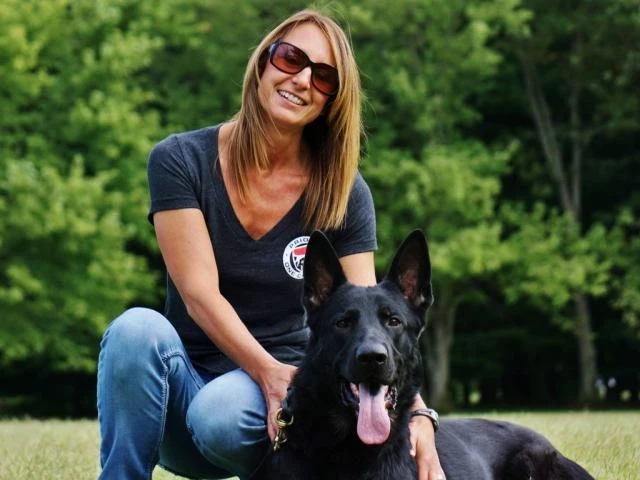Introduction
Dog training is an essential part of being a responsible pet owner. A well-trained dog is a joy to be around and can make your life easier in many ways. Comprehensive dog training involves teaching your dog basic commands, socializing them with people and other animals, and addressing any behavioral issues. In this article, we will explore the components of comprehensive dog training and offer tips on how to ensure your dog is well-trained.
The Basics of Dog Training
The basics of dog training involve teaching your dog the fundamental commands that they need to know to be obedient and well-behaved. These commands include sit, stay, come, down, heel, and leave it. Once your dog learns these commands, they will be able to follow your directions and behave appropriately in various situations.
Teaching Basic Commands
Teaching basic commands is a process that requires patience, consistency, and positive reinforcement. Here are some tips for teaching your dog basic commands:
Use positive reinforcement, such as treats or praise, to reward your dog for following commands.
Be consistent with the commands you use, and use the same tone of voice each time.
Keep training sessions short and frequent, rather than long and infrequent.
Gradually increase the difficulty of the commands as your dog becomes more confident and skilled.
Socializing Your Dog
Socializing your dog is another critical aspect of comprehensive dog training. Socialization involves exposing your dog to a variety of people, animals, and environments, so they become comfortable in different situations. Socializing your dog can prevent them from becoming anxious or aggressive in unfamiliar situations.
Here are some tips for socializing your dog:
Introduce your dog to different people, including men, women, children, and people of different races and ages.
Introduce your dog to other dogs in a controlled environment, such as a dog park or obedience class.
Gradually expose your dog to different environments, such as busy streets, parks, and crowds.
Reward your dog for calm behavior in new situations.
Addressing Behavioral Issues
Behavioral issues can be a significant obstacle to comprehensive dog training. Addressing these issues requires identifying the root cause of the behavior and working to correct it. Common behavioral issues include aggression, anxiety, and destructive behavior.
Here are some tips for addressing behavioral issues:
Identify the root cause of the behavior, such as fear or frustration.
Use positive reinforcement to train your dog to replace the undesirable behavior with a more acceptable one.
Seek the help of a professional dog trainer or behaviorist if the behavior persists.
Tips for Comprehensive Dog Training
Be Consistent
Consistency is key when it comes to comprehensive dog training. Use the same commands, tone of voice, and rewards each time you train your dog. This consistency will help your dog understand what is expected of them and make the training process more effective.
Use Positive Reinforcement
Positive reinforcement is a powerful tool in comprehensive dog training. Reward your dog for good behavior with treats, praise, or playtime. Positive reinforcement will help your dog associate good behavior with positive outcomes and make them more likely to repeat the behavior.
Be Patient
Comprehensive dog training is a process that requires patience. Dogs learn at their own pace, and it may take time for them to master new commands or behaviors. Be patient with your dog and avoid becoming frustrated or angry if they do not immediately respond to training.
Use Appropriate Training Tools
Using appropriate training tools can make the training process more effective and enjoyable for both you and your dog. Some common training tools include leashes, collars, and clickers. However, it is essential to ensure that you use these tools correctly and safely to avoid causing harm to your dog.
Checklist for Comprehensive Dog Training
Here is a checklist for comprehensive dog training:
Teach your dog basic commands, such as sit, stay, come, down, heel, and leave it.Socialize your dog by exposing them to different people, animals, and environments.Address any behavioral issues, such as aggression or anxiety.Be consistent with your commands, tone of voice, and rewards.Use positive reinforcement to reward good behavior.Be patient and avoid becoming frustrated or angry.Use appropriate training tools, such as leashes, collars, and clickers.FAQs about Comprehensive Dog Training
What is the best age to start dog training?
It is best to start dog training as early as possible, ideally when your dog is a puppy. Puppies are more receptive to learning new behaviors and commands, and early training can help prevent the development of behavioral issues.
Can I train my dog myself, or do I need a professional trainer?
You can train your dog yourself, but a professional trainer can be helpful, especially if you are struggling with specific behavioral issues. A professional trainer can provide guidance and support, and they can work with you to develop a customized training plan for your dog.
How long does it take to train a dog?
The amount of time it takes to train a dog depends on the dog's age, breed, and temperament, as well as the training methods used. However, most dogs can learn basic commands within a few weeks of consistent training.
Conclusion
Comprehensive dog training is an essential part of being a responsible pet owner. By teaching your dog basic commands, socializing them, and addressing any behavioral issues, you can ensure that your dog is well-behaved and enjoyable to be around. Remember to be patient, consistent, and use positive reinforcement, and consider seeking the help of a professional trainer if necessary. By following these tips, you can enjoy a happy, well-trained dog for years to come.


